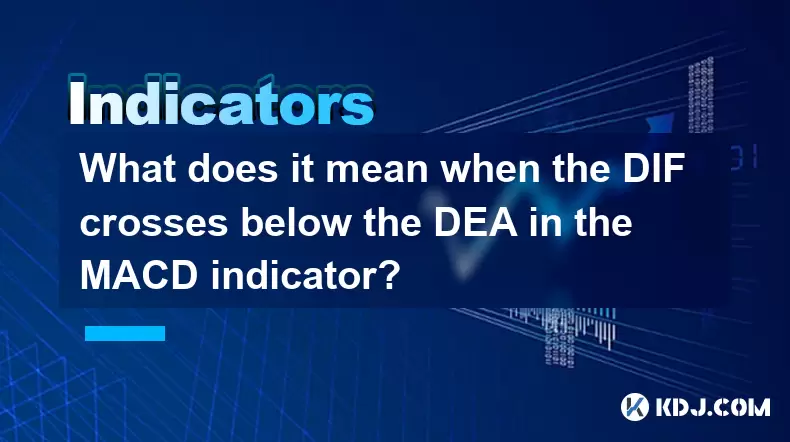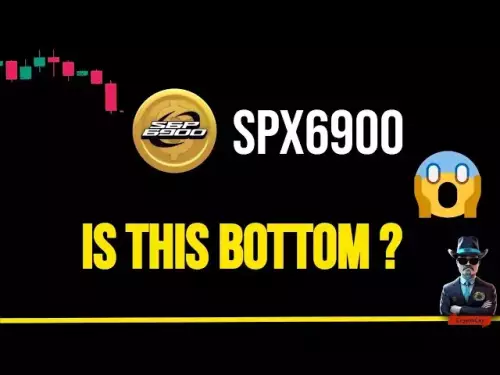-
 Bitcoin
Bitcoin $113100
-1.74% -
 Ethereum
Ethereum $4800
1.16% -
 XRP
XRP $3.041
0.36% -
 Tether USDt
Tether USDt $0.9999
0.02% -
 BNB
BNB $876.6
-0.40% -
 Solana
Solana $205.1
0.96% -
 USDC
USDC $0.0000
0.00% -
 Dogecoin
Dogecoin $0.2345
-0.10% -
 TRON
TRON $0.3629
0.40% -
 Cardano
Cardano $0.9260
1.91% -
 Chainlink
Chainlink $26.20
0.28% -
 Hyperliquid
Hyperliquid $46.04
2.89% -
 Sui
Sui $3.722
0.22% -
 Stellar
Stellar $0.4113
-0.53% -
 Ethena USDe
Ethena USDe $1.000
0.03% -
 Bitcoin Cash
Bitcoin Cash $590.3
0.39% -
 Avalanche
Avalanche $25.82
-0.01% -
 Hedera
Hedera $0.2504
-0.92% -
 Litecoin
Litecoin $119.1
-1.33% -
 UNUS SED LEO
UNUS SED LEO $9.598
0.03% -
 Toncoin
Toncoin $3.315
-1.69% -
 Shiba Inu
Shiba Inu $0.00001308
-1.02% -
 Uniswap
Uniswap $11.06
-2.10% -
 Polkadot
Polkadot $4.149
-1.10% -
 Dai
Dai $1.000
0.03% -
 Aave
Aave $350.7
-1.07% -
 Cronos
Cronos $0.1587
0.97% -
 Bitget Token
Bitget Token $4.664
-0.71% -
 Monero
Monero $274.5
3.42% -
 Ethena
Ethena $0.7021
-4.70%
What does it mean when the DIF crosses below the DEA in the MACD indicator?
A DIF cross below DEA signals bearish momentum in crypto trading, especially when confirmed by negative histogram, price action, and resistance levels.
Aug 10, 2025 at 02:35 pm

Understanding the MACD Indicator Components
The MACD (Moving Average Convergence Divergence) indicator is a widely used technical analysis tool in the cryptocurrency trading space. It consists of three primary components: the DIF, the DEA, and the MACD histogram. The DIF (Difference Line) is calculated by subtracting the 26-period Exponential Moving Average (EMA) from the 12-period EMA of an asset’s price. This line reflects short-term momentum compared to longer-term momentum. The DEA (Signal Line) is a 9-period EMA of the DIF itself, acting as a smoothing mechanism that helps identify trend direction and potential reversals. When traders observe the DIF crossing below the DEA, it signals a shift in momentum that warrants close attention.
What Happens When DIF Crosses Below DEA?
A DIF crossing below the DEA is interpreted as a bearish signal within the MACD framework. This crossover typically occurs when the short-term momentum, represented by the DIF, begins to weaken relative to the smoothed signal line. In cryptocurrency markets, where volatility is high and sentiment shifts rapidly, this crossover can indicate that upward momentum is fading. The visual representation on the chart shows the DIF line descending and intersecting the DEA from above. This movement suggests that buying pressure is diminishing, and sellers may be gaining control. Traders often view this as a potential entry point for short positions or a signal to exit long positions.
How to Confirm the Bearish Signal
While the DIF/DEA crossover is a strong indicator, it should not be used in isolation. To increase reliability, traders incorporate additional confirmation tools. One effective method is analyzing the MACD histogram. When the DIF crosses below the DEA, the histogram bars, which represent the difference between DIF and DEA, begin to shrink and turn negative. A transition from positive to negative histogram values reinforces the bearish interpretation. Another confirmation technique involves checking price action patterns such as bearish engulfing candles or lower highs forming on the chart. Volume analysis can also help; a spike in selling volume during the crossover adds credibility to the signal. Utilizing support and resistance levels is crucial—when the crossover occurs near a known resistance zone, the likelihood of a downward move increases.
Step-by-Step Guide to Responding to the Crossover
- Open your preferred cryptocurrency trading platform (e.g., Binance, TradingView, or Coinbase Pro) and load the price chart of the asset you are monitoring.
- Apply the MACD indicator to the chart by selecting it from the indicators menu; ensure the default settings (12, 26, 9) are active unless you have a customized strategy.
- Observe the two lines in the MACD sub-window: the solid line is the DIF, and the dashed line is the DEA.
- Wait for the DIF line to cross from above to below the DEA line. This visual intersection is the key trigger.
- Simultaneously check the histogram to confirm it is transitioning into negative territory, reinforcing the bearish momentum.
- Cross-verify with price structure—look for rejection at resistance, bearish candlestick patterns, or breakdowns below key moving averages.
- If all conditions align, consider closing existing long positions or initiating a short trade with a defined stop-loss above the recent swing high.
- Set a take-profit level based on nearby support zones or use a risk-reward ratio of at least 1:2.
Common Misinterpretations and Pitfalls
One frequent mistake is acting on every DIF/DEA crossover without considering the broader market context. In ranging or sideways markets, these crossovers can produce false signals, leading to whipsaws. For instance, in a consolidation phase, the DIF may briefly dip below the DEA only to reverse shortly after, trapping traders in premature short positions. Another pitfall is ignoring divergence. Sometimes, even when the DIF crosses below the DEA, price may continue rising, indicating a bullish divergence that could precede a strong upward move. Traders must also be cautious during low-volume periods, such as weekends in crypto markets, where price movements may lack conviction. Relying solely on MACD without integrating volume, order book data, or on-chain metrics can reduce the accuracy of trading decisions.
Using the Crossover in Different Timeframes
The significance of a DIF crossing below DEA varies depending on the chart timeframe. On a 1-hour chart, this signal may indicate a short-term pullback rather than a major trend reversal. In contrast, the same crossover on a daily chart carries more weight and could suggest the beginning of a prolonged downtrend. Scalpers using 5-minute or 15-minute charts might use this signal for quick exits, while swing traders prefer the 4-hour or daily MACD for higher-probability setups. It is essential to align the crossover signal with your trading style. For example, a position trader may wait for the crossover to occur on both the 4-hour and daily charts before acting, increasing the signal’s reliability. Always ensure that the EMA settings on each timeframe are consistent to maintain analytical coherence.
Frequently Asked Questions
Q: Can the DIF crossing below DEA ever be a bullish signal?
A: In certain contexts, such as during a deep correction within an overall uptrend, this crossover might represent a healthy pullback rather than a reversal. If the price quickly rebounds and the DIF recrosses above the DEA, it could confirm trend continuation. However, the crossover itself remains inherently bearish in interpretation.
Q: How long should I wait after the crossover to confirm the trend?
A: Traders often wait for at least one full candle to close after the crossover to avoid false triggers. For higher timeframes like daily charts, waiting 24 hours ensures the signal is not invalidated by intraday noise.
Q: Does the MACD crossover work the same across all cryptocurrencies?
A: The mechanics remain consistent, but effectiveness varies. Major coins like Bitcoin and Ethereum tend to produce more reliable signals due to higher liquidity and less manipulation. Low-cap altcoins with erratic price action may generate frequent false crossovers.
Q: Should I combine the MACD crossover with RSI or other oscillators?
A: Yes, combining MACD with the Relative Strength Index (RSI) can enhance accuracy. For example, a DIF crossing below DEA while RSI is above 70 (overbought) strengthens the bearish case. Conversely, if RSI is near 30 (oversold), the crossover might lack follow-through.
Disclaimer:info@kdj.com
The information provided is not trading advice. kdj.com does not assume any responsibility for any investments made based on the information provided in this article. Cryptocurrencies are highly volatile and it is highly recommended that you invest with caution after thorough research!
If you believe that the content used on this website infringes your copyright, please contact us immediately (info@kdj.com) and we will delete it promptly.
- MAGACOIN Finance: Can This Crypto Presale Deliver Explosive Gains?
- 2025-08-25 09:25:14
- XRP Price, Solana, and Meme Coins: What's Hot in the Crypto Streets?
- 2025-08-25 09:25:14
- Cardano, Bitcoin, and Presales: Navigating the 2025 Crypto Landscape, MAGACOIN FINANCE in Focus
- 2025-08-25 09:30:12
- Hyperliquid, WLFI-USD, and DeFi Equity: A Deep Dive
- 2025-08-25 09:45:22
- BlockDAG: A Layer 1 Solution Thriving in a Volatile Market
- 2025-08-25 10:05:22
- Ripple's RLUSD and Japan's Regulation: A Match Made in Digital Finance Heaven
- 2025-08-25 07:05:29
Related knowledge

What does it mean when the +DI and -DI cross frequently in the DMI indicator but the ADX is flattening?
Aug 11,2025 at 03:15am
Understanding the DMI Indicator ComponentsThe Directional Movement Index (DMI) is a technical analysis tool composed of three lines: the +DI (Positive...

What does the sudden appearance of a "dark cloud cover" candlestick pattern during an uptrend indicate?
Aug 13,2025 at 11:35am
Understanding the 'Dark Cloud Cover' Candlestick PatternThe dark cloud cover is a bearish reversal pattern in technical analysis that typically appear...

What does it mean when the moving average, MACD, and RSI all send buy signals simultaneously?
Aug 11,2025 at 01:42pm
Understanding the Convergence of Technical IndicatorsWhen the moving average, MACD, and RSI all generate buy signals at the same time, traders interpr...

What does it mean when both the KDJ indicator and the RSI show overbought signals simultaneously?
Aug 13,2025 at 11:35am
Understanding the KDJ Indicator in Cryptocurrency TradingThe KDJ indicator is a momentum oscillator derived from the Stochastic Oscillator, widely use...

What does it mean when the price is trading above the SAR indicator but the red dots are densely packed?
Aug 09,2025 at 11:49pm
Understanding the SAR Indicator and Its Visual SignalsThe SAR (Parabolic Stop and Reverse) indicator is a technical analysis tool used primarily to de...

What does it mean when the candlestick chart forms a "Morning Star" but trading volume is sluggish?
Aug 12,2025 at 06:28pm
Understanding the Morning Star Candlestick PatternThe Morning Star is a three-candle bullish reversal pattern commonly observed in cryptocurrency pric...

What does it mean when the +DI and -DI cross frequently in the DMI indicator but the ADX is flattening?
Aug 11,2025 at 03:15am
Understanding the DMI Indicator ComponentsThe Directional Movement Index (DMI) is a technical analysis tool composed of three lines: the +DI (Positive...

What does the sudden appearance of a "dark cloud cover" candlestick pattern during an uptrend indicate?
Aug 13,2025 at 11:35am
Understanding the 'Dark Cloud Cover' Candlestick PatternThe dark cloud cover is a bearish reversal pattern in technical analysis that typically appear...

What does it mean when the moving average, MACD, and RSI all send buy signals simultaneously?
Aug 11,2025 at 01:42pm
Understanding the Convergence of Technical IndicatorsWhen the moving average, MACD, and RSI all generate buy signals at the same time, traders interpr...

What does it mean when both the KDJ indicator and the RSI show overbought signals simultaneously?
Aug 13,2025 at 11:35am
Understanding the KDJ Indicator in Cryptocurrency TradingThe KDJ indicator is a momentum oscillator derived from the Stochastic Oscillator, widely use...

What does it mean when the price is trading above the SAR indicator but the red dots are densely packed?
Aug 09,2025 at 11:49pm
Understanding the SAR Indicator and Its Visual SignalsThe SAR (Parabolic Stop and Reverse) indicator is a technical analysis tool used primarily to de...

What does it mean when the candlestick chart forms a "Morning Star" but trading volume is sluggish?
Aug 12,2025 at 06:28pm
Understanding the Morning Star Candlestick PatternThe Morning Star is a three-candle bullish reversal pattern commonly observed in cryptocurrency pric...
See all articles

























































































